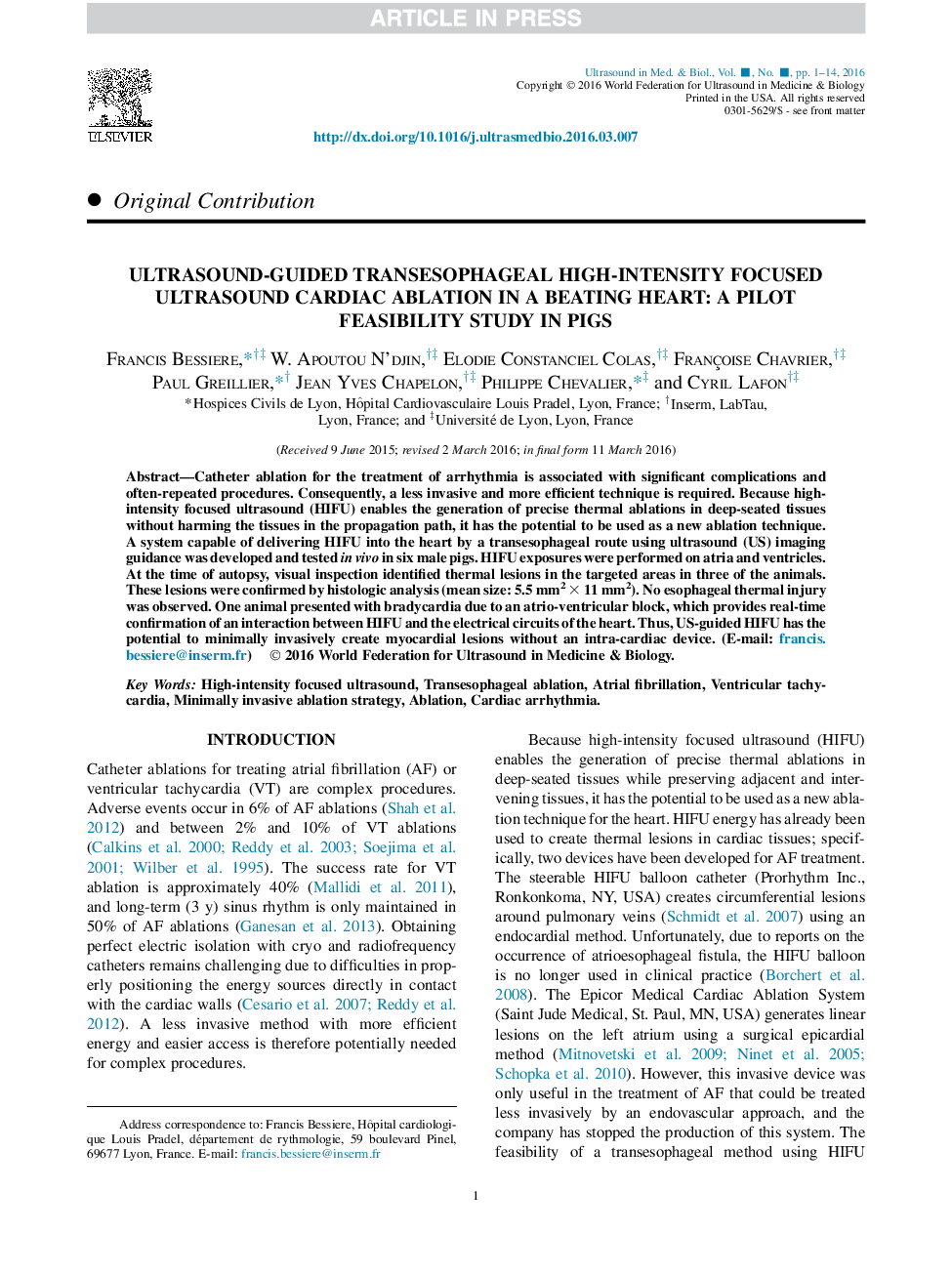| Article ID | Journal | Published Year | Pages | File Type |
|---|---|---|---|---|
| 1760178 | Ultrasound in Medicine & Biology | 2016 | 14 Pages |
Abstract
Catheter ablation for the treatment of arrhythmia is associated with significant complications and often-repeated procedures. Consequently, a less invasive and more efficient technique is required. Because high-intensity focused ultrasound (HIFU) enables the generation of precise thermal ablations in deep-seated tissues without harming the tissues in the propagation path, it has the potential to be used as a new ablation technique. A system capable of delivering HIFU into the heart by a transesophageal route using ultrasound (US) imaging guidance was developed and tested in vivo in six male pigs. HIFU exposures were performed on atria and ventricles. At the time of autopsy, visual inspection identified thermal lesions in the targeted areas in three of the animals. These lesions were confirmed by histologic analysis (mean size: 5.5 mm2 Ã 11 mm2). No esophageal thermal injury was observed. One animal presented with bradycardia due to an atrio-ventricular block, which provides real-time confirmation of an interaction between HIFU and the electrical circuits of the heart. Thus, US-guided HIFU has the potential to minimally invasively create myocardial lesions without an intra-cardiac device.
Keywords
Related Topics
Physical Sciences and Engineering
Physics and Astronomy
Acoustics and Ultrasonics
Authors
Francis Bessiere, W. Apoutou N'djin, Elodie Constanciel Colas, Françoise Chavrier, Paul Greillier, Jean Yves Chapelon, Philippe Chevalier, Cyril Lafon,
